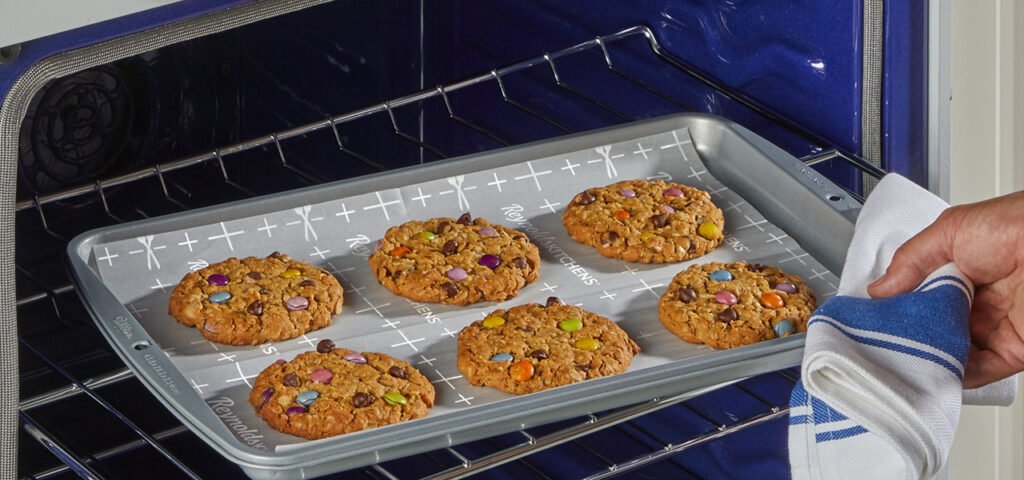Baking is a delightful art that transforms simple ingredients into delicious treats. However, the tools and materials you use can significantly impact your baking results. Among these tools, baking paper and parchment paper are essential items found in most kitchens. Though often used interchangeably, they serve different purposes and possess unique properties. This article explores the differences between baking paper and parchment paper, emphasizing the advantages of baking paper.

Understanding Baking Paper
Definition and Composition
Baking paper, also known as baking parchment, is a specially treated paper designed to withstand high temperatures and provide a non-stick surface for baked goods. It is typically made from cellulose fibers sourced from wood pulp. The unique aspect of baking paper is its silicone coating, which grants it its non-stick properties and heat resistance. This treatment makes it ideal for various baking applications, ensuring that your creations come out perfectly every time.
Characteristics of Baking Paper
Non-Stick Surface: The silicone coating on baking paper ensures that baked goods do not stick to the surface. This is particularly beneficial for delicate items like cookies and pastries, allowing for easy removal without breaking.
Heat Resistance: Baking paper can withstand temperatures of up to 420°F (215°C), making it suitable for most baking tasks. This heat resistance ensures that the paper doesn’t burn or decompose during the baking process.
Moisture Absorption: One of the key benefits of baking paper is its ability to absorb excess moisture. This characteristic helps achieve the desired texture in baked goods, ensuring they are neither soggy nor too dry.
Versatility: Baking paper can be used for a wide variety of tasks, from lining baking sheets and cake pans to wrapping food for steaming. Its versatility makes it a staple in any kitchen.

Understanding Parchment Paper
Definition and Composition
Parchment paper is another type of baking paper, but it undergoes a different treatment process. Like baking paper, it is also made from cellulose fibers, but it is typically treated with acid to give it a smooth finish and then coated with silicone. This process results in a paper that is non-stick and heat-resistant, but with different characteristics than traditional baking paper.
Characteristics of Parchment Paper
Non-Stick Properties: Parchment paper also features a non-stick surface, which is excellent for preventing baked goods from adhering to the pan.
Higher Heat Tolerance: Parchment paper can generally withstand temperatures of up to 450°F (232°C), making it slightly more heat-resistant than some baking papers.
Moisture Retention: Parchment paper is often used in en papillote cooking, where food is sealed in paper to steam. This feature allows it to retain moisture effectively.
Durability: Parchment paper is thicker and more durable than many types of baking paper, which can be advantageous in certain cooking applications.

Key Differences Between Baking Paper and Parchment Paper
Composition and Treatment
The main difference lies in how each type of paper is treated. Baking paper is primarily silicone-coated, which enhances its non-stick properties and makes it suitable for a variety of baking tasks. In contrast, parchment paper undergoes an acid treatment, which gives it a smooth surface and slight flexibility. While both papers are useful, baking paper is often favored for its specific advantages in baking.
Applications in Baking
Baking Paper:
Ideal for Cookies and Cakes: The non-stick surface ensures easy removal of cookies and cakes without any residue left behind.
Great for Roasting: Its moisture-absorbing properties make it perfect for roasting vegetables and meats, allowing for caramelization while preventing sogginess.
Convenient for Various Cooking Techniques: Baking paper is also effective for tasks like lining pans, wrapping food, and steaming.
Parchment Paper:
Best for En Papillote Cooking: Parchment paper excels in steaming food, making it the go-to choice for en papillote methods.
Ideal for Candy Making: Its higher heat tolerance makes it suitable for candy-making processes where high temperatures are involved.

Weifang Runjia New Materials to remind you
In summary, while baking paper and parchment paper share similarities, the advantages of baking paper make it a superior choice for many baking tasks. Its exceptional non-stick properties, optimal moisture management, versatility, and user-friendly nature set it apart as an essential tool in any baker’s arsenal. Whether you’re a novice home cook or a seasoned professional, baking paper can help you achieve perfect results every time. By understanding the differences between these two types of paper and recognizing the advantages of baking paper, you can enhance your baking experience and enjoy delicious outcomes.